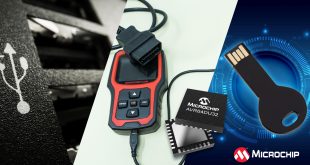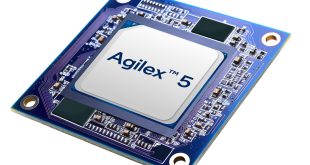Altera Corporation is making available Quartus II beta software and early access documentation for MAX 10 FPGAs, the latest addition to its Generation 10 portfolio of FPGAs and SoCs. Based on TSMC’s 55 nm embedded flash process technology, the MAX 10 FPGAs deliver advanced processing capabilities in a small form factor, low-cost, instant-on programmable logic device. Availability of software support and product documentation enables customers to start their MAX 10 FPGA designs immediately.
Altera recently completed tape out of the first MAX 10 FPGA and is working with TSMC to begin delivering the non-volatile FPGA family to customers in Q3 2014. Comprehensive details on MAX 10 FPGAs will be publicly unveiled once silicon and development kits are available. Early access documentation is available today for customers in Altera’s MAX 10 FPGA early access program.
“As we announced last year, our focus on FPGAs with embedded flash technology is a key component of the Generation 10 product portfolio,” said Patrick Dorsey, senior director of product marketing at Altera. “With early access to MAX 10 FPGAs, customers can now get access to the powerful combination of FPGA processing with non-volatility enabled by embedded flash technology.”
Qualified customers enrolled in the MAX 10 FPGA early access program are able to get a jumpstart on their designs by running design compilation and timing analysis using Quartus II software. Offering early access software allows customers to accelerate their path to market for high-volume applications that require advanced processing capabilities with low system costs and power.
“TSMC is the first foundry to offer embedded flash on 55 nm process technology and we are pleased to work with a long-term partner like Altera to productize this technology in MAX 10 FPGAs,” said Chen-Chung Chao, director, TSMC North America. “Our 55 nm embedded flash process was developed to support applications that require high levels of non-volatile integration in a wide range of end markets.”
MAX 10 FPGAs are designed to lower total system costs and minimize board complexity. The low-cost device family combines non-volatile, instant-on functionality with several advanced capabilities, including digital signal processing, analogue functionality, Nios II embedded processing and external memory interfaces. MAX 10 FPGA’s small form factor, single-chip integration is even more compelling to board designers when used alongside Enpirion power management solutions. These capabilities make MAX 10 FPGAs suitable for many end markets, including: automotive, industrial and communications.
 CIE Components in Electronics
CIE Components in Electronics



